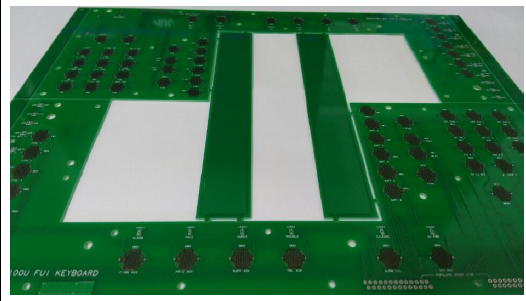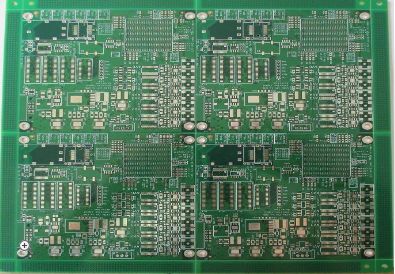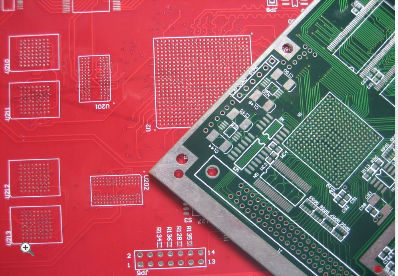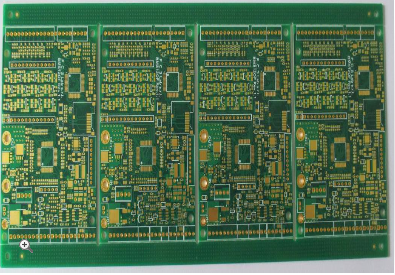-
 Agriculture
Agriculture
-
 Health-Care
Health-Care
-
 Environment
Environment
-
 Construction-Real-Estate
Construction-Real-Estate
-
 Tools-Hardware
Tools-Hardware
-
 Home-Garden
Home-Garden
-
 Furniture
Furniture
-
 Luggage-Bags-Cases
Luggage-Bags-Cases
-
 Medical-devices-Supplies
Medical-devices-Supplies
-
 Gifts-Crafts
Gifts-Crafts
-
 Sports-Entertainment
Sports-Entertainment
-
 Food-Beverage
Food-Beverage
-
 Vehicles-Transportation
Vehicles-Transportation
-
 Power-Transmission
Power-Transmission
-
 Material-Handling
Material-Handling
-
 Renewable-Energy
Renewable-Energy
-
 Safety
Safety
-
 Testing-Instrument-Equipment
Testing-Instrument-Equipment
-
 Construction-Building-Machinery
Construction-Building-Machinery
-
 Pet-Supplies
Pet-Supplies
-
 Personal-Care-Household-Cleaning
Personal-Care-Household-Cleaning
-
 Vehicle-Accessories-Electronics-Tools
Vehicle-Accessories-Electronics-Tools
-
 School-Office-Supplies
School-Office-Supplies
-
 Packaging-Printing
Packaging-Printing
-
 Mother-Kids-Toys
Mother-Kids-Toys
-
 Business-Services
Business-Services
-
 Commercial-Equipment-Machinery
Commercial-Equipment-Machinery
-
 Apparel-Accessories
Apparel-Accessories
-
 Security
Security
-
 Shoes-Accessories
Shoes-Accessories
-
 Vehicle-Parts-Accessories
Vehicle-Parts-Accessories
-
 Jewelry-Eyewear-Watches-Accessories
Jewelry-Eyewear-Watches-Accessories
-
 Lights-Lighting
Lights-Lighting
-
 Fabric-Textile-Raw-Material
Fabric-Textile-Raw-Material
-
 Fabrication-Services
Fabrication-Services
-
 Industrial-Machinery
Industrial-Machinery
-
 Consumer-Electronics
Consumer-Electronics
-
 Electrical-Equipment-Supplies
Electrical-Equipment-Supplies
-
 Electronic-Components-Accessories-Telecommunications
Electronic-Components-Accessories-Telecommunications
-
 Home-Appliances
Home-Appliances
-
 Beauty
Beauty
-
 Chemicals
Chemicals
-
 Rubber-Plastics
Rubber-Plastics
-
 Metals-Alloys
Metals-Alloys
- Masonry Materials
- Curtain Walls & Accessories
- Earthwork Products
- Fireproofing Materials
- Heat Insulation Materials
- Plastic Building Materials
- Building Boards
- Soundproofing Materials
- Timber
- Waterproofing Materials
- Balustrades & Handrails
- Bathroom & Kitchen
- Flooring & Accessories
- Tiles & Accessories
- Door, Window & Accessories
- Fireplaces & Stoves
- Floor Heating Systems & Parts
- Stairs & Stair Parts
- Ceilings
- Elevators & Escalators
- Stone
- Countertops, Vanity Tops & Table Tops
- Mosaics
- Metal Building Materials
- Multifunctional Materials
- Ladders & Scaffoldings
- Mouldings
- Corner Guards
- Decorative Films
- Formwork
- Building & Industrial Glass
- Other Construction & Real Estate
- Wallpapers/Wall panels
- HVAC System & Parts
- Outdoor Facilities
- Prefabricated Buildings
- Festive & Party Supplies
- Bathroom Products
- Household Sundries
- Rain Gear
- Garden Supplies
- Household Cleaning Tools & Accessories
- Lighters & Smoking Accessories
- Home Storage & Organization
- Household Scales
- Smart Home Improvement
- Home Textiles
- Kitchenware
- Drinkware & Accessories
- Dinnerware, Coffee & Wine
- Home Decor
- Golf
- Fitness & Body Building
- Amusement Park Facilities
- Billiards, Board Game,Coin Operated Games
- Musical Instruments
- Outdoor Affordable Luxury Sports
- Camping & Hiking
- Fishing
- Sports Safety&Rehabilitation
- Ball Sports Equipments
- Water Sports
- Winter Sports
- Luxury Travel Equipments
- Sports Shoes, Bags & Accessories
- Cycling
- Other Sports & Entertainment Products
- Artificial Grass&Sports Flooring&Sports Court Equipment
- Scooters
- Food Ingredients
- Honey & Honey Products
- Snacks
- Nuts & Kernels
- Seafood
- Plant & Animal Oil
- Beverages
- Fruit & Vegetable Products
- Frog & Escargot
- Bean Products
- Egg Products
- Dairy Products
- Seasonings & Condiments
- Canned Food
- Instant Food
- Baked Goods
- Other Food & Beverage
- Meat & Poultry
- Confectionery
- Grain Products
- Feminie Care
- Hair Care & Styling
- Body Care
- Hands & Feet Care
- Hygiene Products
- Men's Grooming
- Laundry Cleaning Supplies
- Travel Size & Gift Sets
- Room Deodorizers
- Other Personal Care Products
- Pest Control Products
- Special Household Cleaning
- Floor Cleaning
- Kitchen & Bathroom Cleaning
- Oral Care
- Bath Supplies
- Yellow Pages
- Correction Supplies
- Office Binding Supplies
- Office Cutting Supplies
- Board Erasers
- Office Adhesives & Tapes
- Education Supplies
- Pencil Cases & Bags
- Notebooks & Writing Pads
- File Folder Accessories
- Calendars
- Writing Accessories
- Commercial Office Supplies
- Pencil Sharpeners
- Pens
- Letter Pad/Paper
- Paper Envelopes
- Desk Organizers
- Pencils
- Markers & Highlighters
- Filing Products
- Art Supplies
- Easels
- Badge Holder & Accessories
- Office Paper
- Printer Supplies
- Book Covers
- Other Office & School Supplies
- Stationery Set
- Boards
- Clipboards
- Stamps
- Drafting Supplies
- Stencils
- Electronic Dictionary
- Books
- Map
- Magazines
- Calculators
- Baby & Toddler Toys
- Educational Toys
- Classic Toys
- Dress Up & Pretend Play
- Toy Vehicle
- Stuffed Animals & Plush Toys
- Outdoor Toys & Structures
- Balloons & Accessories
- Baby Food
- Children's Clothing
- Baby Supplies & Products
- Maternity Clothes
- Kids Shoes
- Baby Care
- Novelty & Gag Toys
- Dolls & Accessories
- Puzzle & Games
- Blocks & Model Building Toys
- Toddler Clothing
- Baby Clothing
- Kids' Luggage & Bags
- Arts, Crafts & DIY Toys
- Action & Toy Figures
- Baby Appliances
- Hobbies & Models
- Remote Control Toys
- Promotional Toys
- Pregnancy & Maternity
- Hygiene Products
- Kid's Textile&Bedding
- Novelty & Special Use
- Toy Weapons
- Baby Gifts
- Baby Storage & Organization
- Auto Drive Systems
- ATV/UTV Parts & Accessories
- Marine Parts & Accessories
- Other Auto Parts
- Trailer Parts & Accessories
- Auto Transmission Systems
- Train Parts & Accessories
- Universal Parts
- Railway Parts & Accessories
- Auto Brake Systems
- Aviation Parts & Accessories
- Truck Parts & Accessories
- Auto Suspension Systems
- Auto Lighting Systems
- New Energy Vehicle Parts & Accessories
- Auto Steering Systems
- Wheels, Tires & Accessories
- Bus Parts & Accessories
- Auto Performance Parts
- Cooling System
- Go-Kart & Kart Racer Parts & Accessories
- Air Conditioning Systems
- Heavy Duty Vehicle Parts & Accessories
- Auto Electrical Systems
- Auto Body Systems
- Auto Engine Systems
- Container Parts & Accessories
- Motorcycle Parts & Accessories
- Refrigeration & Heat Exchange Equipment
- Machine Tool Equipment
- Food & Beverage Machinery
- Agricultural Machinery & Equipment
- Apparel & Textile Machinery
- Chemical Machinery
- Packaging Machines
- Paper Production Machinery
- Plastic & Rubber Processing Machinery
- Industrial Robots
- Electronic Products Machinery
- Metal & Metallurgy Machinery
- Woodworking Machinery
- Home Product Manufacturing Machinery
- Machinery Accessories
- Environmental Machinery
- Machinery Service
- Electrical Equipment Manufacturing Machinery
- Industrial Compressors & Parts
- Tobacco & Cigarette Machinery
- Production Line
- Used Industrial Machinery
- Electronics Production Machinery
- Other Machinery & Industrial Equipment
- Camera, Photo & Accessories
- Portable Audio, Video & Accessories
- Television, Home Audio, Video & Accessories
- Video Games & Accessories
- Mobile Phone & Accessories
- Electronic Publications
- Earphone & Headphone & Accessories
- Speakers & Accessories
- Smart Electronics
- TV Receivers & Accessories
- Mobile Phone & Computer Repair Parts
- Chargers, Batteries & Power Supplies
- Used Electronics
- VR, AR, MR Hardware & Software
- Projectors & Presentation Equipments
- Other Consumer Electronics
- Cables & Commonly Used Accessories
- Computer Hardware & Software
- Displays, Signage and Optoelectronics
- Discrete Semiconductors
- Wireless & IoT Module and Products
- Telecommunications
- Connectors, Terminals & Accessories
- Development Boards, Electronic Modules and Kits
- Circuit Protection
- Sensors
- Isolators
- Audio Components and Products
- Integrated Circuits
- Power Supplies
- Relays
- RF, Microwave and RFID
- Electronic Accessories & Supplies
- Passive Components
- PCB & PCBA
- Air Quality Appliances
- Home Appliance Parts
- Heating & Cooling Appliances
- Small Kitchen Appliances
- Laundry Appliances
- Water Heaters
- Water Treatment Appliances
- Refrigerators & Freezers
- Personal Care & Beauty Appliances
- Major Kitchen Appliances
- Cleaning Appliances
- Second-hand Appliances
- Smart Home Appliances
- Other Home Appliances
- Energy Chemicals
- Inorganic Chemicals
- Basic Organic Chemicals
- Agrochemicals
- Admixture & Additives
- Catalysts & Chemical Auxiliary Agents
- Pigments & Dyestuff
- Coating & Paint
- Daily Chemicals
- Polymer
- Organic Intermediate
- Adhesives & Sealants
- Chemical Waste
- Biological Chemical Products
- Surface Treatment Chemicals
- Painting & Coating
- Chemical Reagents
- Flavor & Fragrance
- Non-Explosive Demolition Agents
- Other Chemicals
- Custom Chemical Services
Next Generation Visualization System PCB Architecture for Immersive Virtual and Augmented Reality Experiences
As we stand on the brink of a new era in digital interaction, the demand for truly immersive virtual and augmented reality experiences is skyrocketing. From gaming and entertainment to professional training and remote collaboration, users expect seamless, high-fidelity visuals that bridge the gap between the physical and digital worlds. Central to meeting these expectations is the underlying hardware, specifically the printed circuit board (PCB) architecture that powers next-generation visualization systems. This article delves into the intricate design and innovative features of such PCBs, exploring how they are engineered to overcome current limitations and unlock unprecedented levels of immersion. By understanding the core components and architectural advancements, we can appreciate the technological leaps required to make VR and AR devices more responsive, realistic, and accessible.
High-Speed Signal Integrity and Low Latency Design
One of the most critical aspects of next-generation visualization system PCBs is ensuring high-speed signal integrity to minimize latency. In immersive VR and AR applications, even milliseconds of delay between user movement and visual feedback can cause discomfort or break the sense of presence. To address this, PCB architectures incorporate advanced materials with low dielectric constants and optimized layer stacking. These materials reduce signal loss and crosstalk, enabling data transmission at rates exceeding 20 Gbps for video streams. Additionally, impedance-controlled routing and differential pair configurations are meticulously implemented to maintain signal quality across the board.
Furthermore, the integration of specialized components like retimers and redrivers helps regenerate signals over longer traces, which is essential for compact yet powerful headset designs. By prioritizing signal integrity, these PCBs support real-time rendering and sensor fusion, allowing devices to deliver smooth, lag-free experiences. This focus on low-latency communication is foundational for applications requiring instant feedback, such as surgical simulations or interactive design in AR.
Power Management and Thermal Efficiency
Efficient power management is another cornerstone of modern visualization system PCBs, as VR and AR devices often operate on battery power while driving high-resolution displays and processors. Advanced power delivery networks (PDNs) on these PCBs use multi-phase voltage regulators and power integrity analysis to minimize noise and ensure stable supply voltages. This is crucial for preventing visual artifacts or system crashes during intensive tasks. Moreover, dynamic voltage and frequency scaling (DVFS) techniques are embedded within the architecture, allowing the system to adjust power consumption based on workload demands.
Thermal management is closely tied to power efficiency, as excessive heat can degrade performance and user comfort. Next-generation PCBs employ thermal vias, heat spreaders, and strategic component placement to dissipate heat effectively. In some designs, flexible PCBs with integrated cooling channels or phase-change materials are used in wearable AR glasses to maintain optimal temperatures. By balancing power needs with thermal constraints, these architectures extend battery life and ensure consistent operation in prolonged immersive sessions.
Integration of Advanced Sensors and Processors
The fusion of diverse sensors and high-performance processors on a single PCB is what enables the contextual awareness and interactivity in VR and AR systems. Modern architectures feature system-on-chip (SoC) solutions that combine CPUs, GPUs, and AI accelerators, all interconnected through high-bandwidth memory (HBM) interfaces. This integration reduces latency in data processing and allows for complex tasks like simultaneous localization and mapping (SLAM) to occur in real time. Sensor hubs on the PCB aggregate inputs from inertial measurement units (IMUs), LiDAR, cameras, and eye-tracking modules, creating a cohesive data pipeline.
To support this, PCB designs use microvia technologies and embedded components to save space while maintaining signal integrity between sensors and processors. For instance, in AR applications, depth-sensing cameras and ambient light sensors are routed to minimize electromagnetic interference, ensuring accurate environmental mapping. This holistic approach to integration not only enhances the realism of virtual overlays but also paves the way for adaptive systems that respond intuitively to user behavior and surroundings.
Scalability and Modularity for Future-Proofing
As VR and AR technologies evolve rapidly, next-generation PCB architectures emphasize scalability and modularity to accommodate future upgrades. Modular PCB designs allow for interchangeable components, such as swapping display drivers or communication modules without redesigning the entire board. This is achieved through standardized interfaces like MIPI CSI-2 for cameras and DP++ for video, alongside expandable connector layouts. Such flexibility enables manufacturers to tailor devices for different market segments, from entry-level VR headsets to enterprise-grade AR systems.
Additionally, the use of field-programmable gate arrays (FPGAs) in these PCBs provides reconfigurable logic that can be updated post-production to support new algorithms or protocols. This future-proofing aspect reduces time-to-market for innovations and encourages ecosystem growth. By designing with scalability in mind, these visualization systems remain relevant amid emerging trends like 5G connectivity or holographic displays, ensuring long-term viability in a competitive landscape.
Miniaturization and Wearable Ergonomics
The push for miniaturization in PCB architecture is driven by the need for lightweight, comfortable VR and AR wearables. Through high-density interconnect (HDI) technology and component-on-board (COB) assembly, PCBs can achieve smaller form factors without sacrificing functionality. This involves stacking multiple layers with laser-drilled microvias to create intricate routing paths for complex circuits. As a result, devices like AR glasses can house powerful computing elements in a slim, aesthetically pleasing frame.
Ergonomics also play a key role, as PCBs must conform to the curved shapes of headsets or glasses while maintaining structural integrity. Flexible PCBs and rigid-flex designs are increasingly adopted to fit unconventional spaces and reduce weight. For example, in VR controllers, flexible circuits enable seamless integration with ergonomic grips and haptic feedback mechanisms. By prioritizing miniaturization and wearability, these architectures enhance user adoption by making immersive technology less intrusive and more intuitive to use.
REPORT































































































































































































































































































































































































































































































































































































